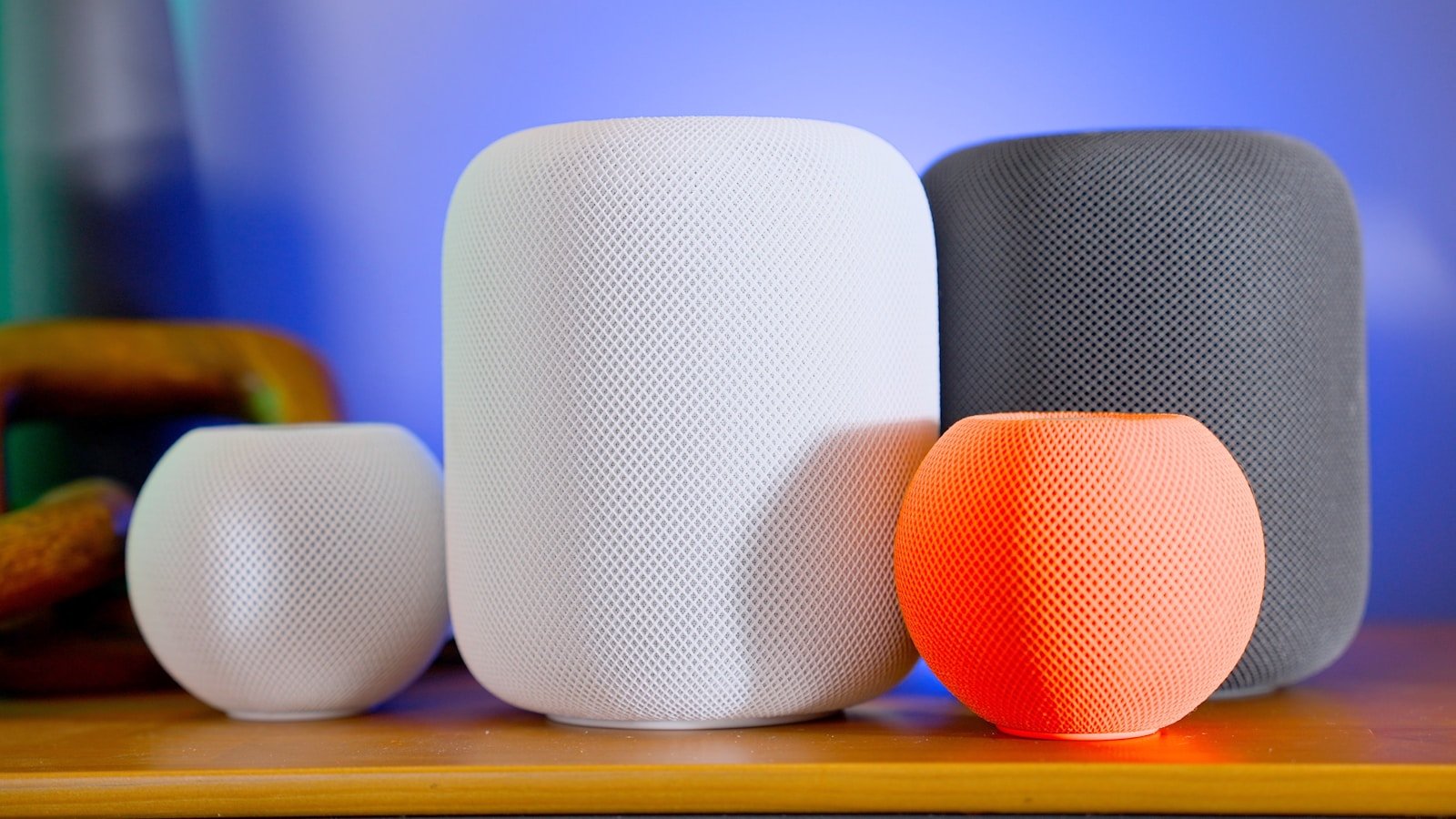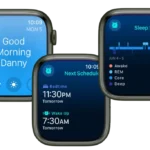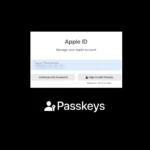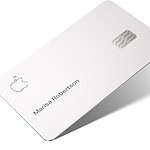Apple is preparing to refresh its smallest smart speaker for the first time since 2020. The second-generation HomePod mini, often referred to as HomePod mini 2, is shaping up to be more than a simple iteration. With smarter connectivity, better sound, and thoughtful design upgrades, this compact speaker is expected to launch in Q3 2025, potentially alongside the iPhone 17 lineup.
Here’s a complete rundown of what’s coming, what’s changing, and what it means for Apple’s smart home strategy.
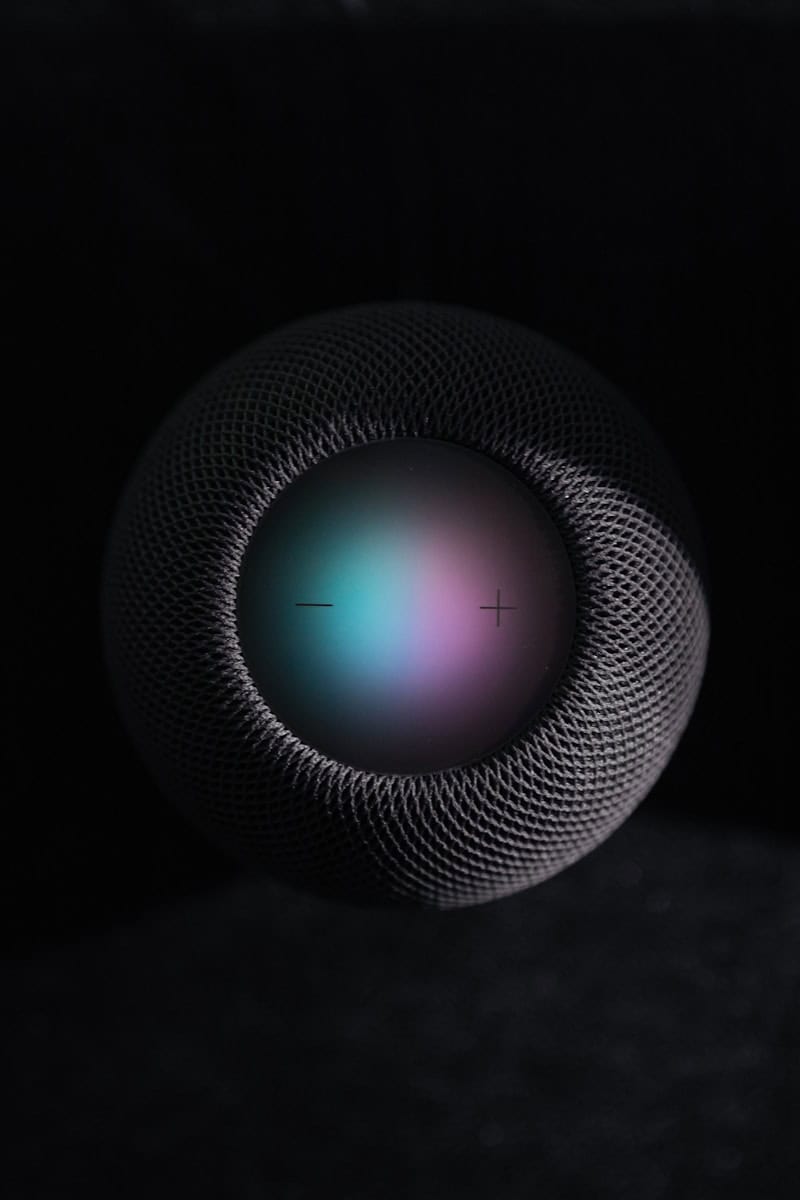
iOS 26 Brings New Life to Current HomePod mini
Even before new hardware arrives, Apple has rolled out meaningful improvements through iOS 26, which also applies to the original HomePod mini. Two standout features:
- Manual Wi‑Fi selection: You can now choose a Wi‑Fi network directly from the Home app, offering more control and less dependency on your iPhone’s network.
- Apple Music crossfade: Smooth transitions between songs (1–12 seconds) can now be enabled, making playlist playback more seamless—especially on party mixes or ambient soundscapes.
These changes signal Apple’s intention to make HomePods more independent, less tethered to iPhones, and better integrated with personalized content.
What to Expect From the HomePod mini 2
The HomePod mini 2 is rumored to arrive by fall 2025, bringing a set of upgrades that position it as a much more competitive device in the evolving smart speaker market.
Key Expected Upgrades:
- Wi‑Fi 6E + Bluetooth LE Audio: A leap forward in wireless performance is expected, powered by Apple’s proprietary “Proxima” chip, which allows for higher bandwidth and lower latency. This also opens the door for features like multi-room lossless audio streaming and smoother Handoff experiences.
- New Processor (S10?): Apple may bring the S10 chip from the Apple Watch Series 10 into the HomePod mini, drastically improving responsiveness, Siri performance, and energy efficiency.
- Improved Audio Quality: Expect more refined tuning, a wider soundstage, and better computational audio—likely using the new chip to enhance clarity, bass, and directional sound for a richer experience in small rooms.
- USB-C Port: Apple may move away from the hardwired USB-C cable, opting instead for a detachable USB-C port, making replacements and third-party cable use more practical.
- New Color Options: While the familiar mesh-covered orb design will likely remain, we may see seasonal color drops similar to iMacs or iPhone cases—perfect for buyers looking to match decor.
- Smart-Home UI Expansion: Although some improvements may be reserved for Apple’s rumored larger Home Hub display, expect the HomePod mini 2 to support smarter interactions through widget-style updates, contextual media handoff, and richer HomeKit control.
Release Timing & Positioning
Apple typically aligns hardware refreshes with its fall iPhone launch event. All signs point to a September 2025 unveiling of the HomePod mini 2, alongside the iPhone 17 and possibly Apple Watch Series 11. A screen-equipped HomePod with display, aimed at competing with the Amazon Echo Show and Google Nest Hub, is also rumored—but likely to launch later in the fall.
HomePod mini 2 vs HomePod mini (2020)
| Feature | HomePod mini (2020) | HomePod mini 2 (Expected) |
|---|---|---|
| Wireless | Wi‑Fi 4, Bluetooth 5.0 | Wi‑Fi 6E, Proxima chip |
| Processor | Apple S5 | Likely Apple S10 |
| Audio | Single full-range driver | Enhanced tuning, spatial audio |
| Power | Wired USB-C (fixed) | Detachable USB-C port |
| Colors | 5 core options | More seasonal/fresh colorways |
| Smart Features | Basic Siri + HomeKit | Faster Siri, expanded widget UI |
| Release | November 2020 | Q3 2025 (likely September) |
Final Take
The HomePod mini 2 is shaping up to be the upgrade users have been waiting for—modern connectivity, smarter internals, and more control over daily use. It’s still compact, still stylish, but likely far more capable.
If you’re already using the first-gen model, the new iOS 26 features will keep it relevant for a while. But for those new to the Apple ecosystem or wanting a better entry point into smart home tech, the upcoming mini 2 looks like the perfect gateway.
Apple is clearly investing heavily in its smart home lineup in 2025. And the HomePod mini 2 might just be the small speaker that makes a big statement.
How to Reset Apple HomePod
Having trouble with your HomePod? Sometimes a quick reset can fix most issues with Apple’s smart speaker. Whether your HomePod is stuck, not responding, or you’re preparing to sell it, knowing how to reset it properly is essential. To reset your HomePod or HomePod mini, simply unplug it, wait 10 seconds, plug it back in, wait another 10 seconds, then press and hold the top until you see a spinning red light.
For those who find the above method doesn’t work, don’t worry. There are alternative ways to reset your HomePod using your iPhone, iPad, or Mac. These methods can be helpful when your HomePod is completely unresponsive to touch controls or when you can’t physically access the device to perform a manual reset.
Remember that resetting your HomePod will erase all personal settings and return it to factory conditions. This means you’ll need to set it up again from scratch, but it also gives you a fresh start if you’ve been experiencing persistent problems with your smart speaker.
You can reset your Apple HomePod in a few different ways, depending on whether it’s responsive and if you have access to the Home app. Before you begin, if you have two HomePod speakers set up as a stereo pair, you must ungroup them in the Home app first.
Here are the steps for each method:
Method 1: Resetting with the Home App (Recommended)
This is the easiest and most common way to reset your HomePod.
- Open the Home app on your iPhone, iPad, or Mac that’s signed in with the same Apple ID you used to set up the HomePod.
- Tap or click on your HomePod (or the stereo pair if you haven’t ungrouped them yet).
- Tap or click the Settings icon (it looks like a gear or cog).
- Scroll down and tap or click “Reset HomePod.”
- Select “Remove Accessory.”
- Wait for a white spinning light to appear on top of your HomePod. Keep waiting until the light disappears, indicating that the reset is complete.
Method 2: Resetting Manually (Without the Home App)
This method is useful if your HomePod isn’t responding or doesn’t appear in the Home app.
- Unplug your HomePod (or the power adapter for HomePod mini).
- Wait 10 seconds, then plug it back in.
- Wait another 10 seconds (this is important!).
- Touch and hold your finger to the center of the top of the HomePod.
- The white spinning light on top will turn red. Keep your finger down.
- Siri will announce, “Your HomePod is about to reset.”
- Continue holding your finger until you hear three beeps. Then, you can lift your finger.
- The HomePod will now reset to factory settings.
Method 3: Restoring HomePod mini with a Mac or PC (HomePod mini only)
This method is specifically for the HomePod mini and can be used if other reset methods aren’t working. It will reset the HomePod mini and update it to the latest software.
- Connect your HomePod mini to your computer using the USB-C cable that came with it.
- Wait a few seconds.
- If you’re using a Mac, open a Finder window. If you’re using a PC, open the latest version of iTunes (or the Apple Devices app on newer Windows versions).
- Select your HomePod mini when it appears in the sidebar (under “Locations” on Mac).
- Click “Restore HomePod.”
- Follow any on-screen prompts to confirm the restore.
After resetting your HomePod, you can set it up again as if it were new.
Key Takeaways
- Reset a HomePod by unplugging it, waiting 10 seconds, plugging it back in, and holding the top until you see red spinning lights.
- Alternative reset methods exist through the Home app on your iPhone or in your Mac’s system settings.
- After resetting, you’ll need to complete the setup process again to reconnect your HomePod to your Apple devices.
Understanding Your HomePod
The Apple HomePod is a smart speaker that combines excellent sound quality with smart home capabilities. Before resetting your device, it’s helpful to understand what makes your HomePod unique and how it works.
Features and Functionality
The HomePod works as both a high-quality speaker and a smart home hub. It connects to Apple Music and plays songs, podcasts, and news with simple voice commands.
Siri integration lets users control music, set timers, check weather, and answer questions without touching the device. Just say “Hey Siri” followed by your request.
HomePod can control compatible smart home devices like lights, thermostats, and locks. Users can create scenes and automations through the Home app.
The top surface has touch controls for volume, play/pause, and activating Siri. When Siri is listening, a colorful light appears on top.
HomePod can receive calls and messages, making it useful for hands-free communication. It also works as an intercom between multiple HomePods in different rooms.
Difference Between HomePod and HomePod Mini
The standard HomePod is larger (6.8 inches tall) with superior sound quality and seven tweeters. The HomePod Mini is smaller (3.3 inches tall) with just one tweeter, making it more affordable.
Both models use Siri and can control smart home devices, but the standard HomePod produces richer, room-filling sound. The Mini works better in smaller spaces or as part of a stereo pair.
The Mini includes a U1 chip for improved device handoff. When your iPhone comes near, it can transfer music playback smoothly to the speaker.
Power connections differ too. The original HomePod has a built-in power cord, while the Mini uses a detachable USB-C cable and adapter.
Both support AirPlay for streaming audio from Apple devices. They can work together in multi-room audio setups throughout your home.
Before You Begin
Resetting your HomePod requires some preparation to ensure the process goes smoothly. Taking these preliminary steps can save you time and prevent potential issues during the reset.
Check Your iOS Version
Your iPhone or iPad needs to be running a compatible iOS version to manage your HomePod properly. The HomePod works best with iOS 14 or later, though newer HomePod features might require more recent updates.
- Open the Settings app on your iPhone
- Tap General
- Tap About
- Look for the Software Version number
If your device needs updating, connect to Wi-Fi and:
- Go to Settings → General
- Tap Software Update
- Follow the prompts to download and install
Having the latest iOS ensures your HomePod reset process will work correctly. It also helps fix many common HomePod issues that might make you think you need a reset in the first place.
Ensure Connectivity and Power
Your HomePod needs to be properly connected to both power and your home network before attempting a reset.
First, check the power connection:
- Make sure the HomePod is plugged into a working outlet
- For HomePod mini, check that the USB-C cable is firmly connected to both the speaker and the power adapter
- The top of the HomePod should light up when powered correctly
Next, verify Wi-Fi connectivity:
- Ensure your iPhone is connected to the same Wi-Fi network as your HomePod
- Check that your router is working properly
- Keep your HomePod and iOS device within reasonable range of your Wi-Fi router
Poor connections can cause your HomePod to become unresponsive or difficult to reset. If your HomePod shows no signs of power, try a different outlet or power adapter before attempting a reset.
Resetting Your HomePod Directly
If your HomePod is acting up, you can reset it without using another Apple device. This method works when you can’t access the Home app or when your HomePod isn’t connecting to your network.
Using Touch Controls on HomePod
To reset your HomePod directly, start by unplugging it from power. Wait about 10 seconds, then plug it back in.
After plugging it back in, wait 5 seconds before touching the top of the HomePod. For the standard HomePod, press and hold your finger on the top surface where the Siri icon appears. On a HomePod mini, press the center of the touch surface.
Keep holding until the white light on top turns red. You’ll hear three beeps confirming the reset process has started.
Don’t remove your finger until you hear these sounds! This is a common mistake many users make when trying to reset their HomePod.
After the reset finishes, your HomePod will restart. The light will show white again, and Siri will announce that the HomePod is ready for setup. Your device has now been factory reset and is ready to be set up as new.
If this method doesn’t work the first time, try again while making sure to keep your finger pressed firmly on the surface.
Resetting Your HomePod via iPhone or iPad
If your HomePod is having issues, resetting it can often solve many problems. You can easily reset your HomePod using an iPhone or iPad that shares the same Apple ID.
Using the Home App
To reset your HomePod using the Home app, first make sure your iPhone or iPad is signed in with the same Apple ID that you used to set up your HomePod originally. This ensures you have the proper permissions to make changes to the device.
Open the Home app on your iPhone or iPad. Locate and tap on your HomePod in the device list. Once selected, tap the Settings icon (gear symbol) to access device settings.
Scroll down to the bottom of the settings page. You’ll find reset options there. Depending on what you want to do, you can choose:
- Restart HomePod – For a simple reboot
- Reset HomePod – To erase all settings and content
If your HomePod isn’t responding to the app, you can try a manual reset by unplugging it. Wait about 10 seconds, then plug it back in. Wait another 10 seconds and touch the top of the HomePod.
Removing Accessory in Home App
Sometimes you need to fully remove your HomePod from your Apple ID and iCloud account. This is useful when you want to give away your HomePod or set it up with a different Apple ID.
To remove your HomePod as an accessory, open the Home app on your device. Find your HomePod in the list of accessories. Press and hold on the HomePod icon to bring up more options.
Scroll down and tap on “Remove Accessory”. The app will ask you to confirm this choice. Once confirmed, the HomePod will be removed from your Home app and iCloud account.
This process disconnects the HomePod from your Apple ID completely. After removal, the HomePod is ready to be set up as new by anyone with an iOS device.
Resetting Your HomePod via MacOS
Resetting your HomePod using a Mac computer is straightforward and gives you full control over the process. The Home app on MacOS provides all the tools you need to manage your smart speaker settings.
Using the Home App on Mac
To reset your HomePod using MacOS, first open the Home app on your Mac. This app comes pre-installed on most recent Mac computers running MacOS. Make sure your Mac is signed in with the same Apple ID as your HomePod.
In the Home app, find your HomePod device in the list of accessories. Click on it to select it.
Next, click on the settings icon (gear symbol) to access the HomePod settings menu. Scroll down to find the “Reset HomePod” option.
You’ll see several options here:
- Restart HomePod – simply turns it off and on
- Remove Accessory – removes it from your Home setup
- Reset HomePod – returns it to factory settings
Choose “Reset HomePod” for a complete factory reset. The Mac will then guide your HomePod through the reset process. This will erase all personal settings and return the device to its original state.
If the standard reset doesn’t work, you may need to try a manual reset method by unplugging the HomePod, waiting 10 seconds, plugging it back in, and then touching the top of the device.
Post-Reset Setup
After resetting your HomePod, you’ll need to set it up again with your Apple ID and Wi-Fi network. This process is straightforward and takes just a few minutes to complete.
Setting Up HomePod Again
Start by placing your HomePod near your iPhone or iPad. Your Apple device will detect the HomePod and show a setup card on screen. If this doesn’t happen automatically, open the Home app and tap the “+” icon to add a new device.
Follow the on-screen instructions to begin the setup process. You’ll be asked to:
- Choose which room the HomePod will be in
- Enable or disable certain features like:
- Personal Requests
- Siri voice recognition
- Analytics sharing
The setup wizard walks you through each step with clear directions. During setup, your iPhone transfers your settings to the HomePod, including your Apple Music preferences.
Your HomePod will play a test sound to confirm everything is working properly. This helps make sure the speaker is functioning correctly after the reset.
Connecting to Wi-Fi and Apple ID
Your HomePod uses the same Wi-Fi network as your iPhone during setup. It pulls this information automatically from your device, so you don’t need to enter Wi-Fi passwords manually.
The HomePod also connects to your Apple ID during setup. This allows it to access your Apple Music subscription, personal playlists, and other account features.
If you have multiple Wi-Fi networks at home, you can change which one the HomePod uses:
- Open the Home app
- Press and hold the HomePod icon
- Tap the settings gear icon
- Select “Move HomePod to…”
- Choose your preferred Wi-Fi network
For homes with mesh Wi-Fi systems, the HomePod will connect to the strongest access point automatically. You can check the connection status through the Home app at any time.
Troubleshooting Common Issues
When your HomePod won’t reset, it can be frustrating. Several common issues might prevent a successful reset, but most can be resolved with the right steps.
If Reset Doesn’t Work
If your HomePod won’t factory reset, try unplugging it first. Remove the power cable and wait about 10 seconds before plugging it back in. This simple step often clears minor glitches.
For HomePod mini users, unplug the power adapter completely. Wait at least 10 seconds before reconnecting it. The short power break helps reset internal components.
Some users report that the touch controls become unresponsive. If pressing and holding the top screen doesn’t trigger the red light and beep sound as expected, try these steps:
- Press firmly in the center of the HomePod’s top
- Hold your finger in place for at least 10 seconds
- Wait for the light to turn red and listen for the beep sound
If the Home app method fails, try resetting directly on the device. Touch and hold the top until the white spinning light turns red.
Persistent Problems After Reset
When problems continue after a reset, contact Apple Tech Support for professional help. Many issues require expertise beyond basic troubleshooting steps.
Check your Wi-Fi connection first. HomePod needs stable internet to function properly. Move it closer to your router or restart your network equipment.
Verify your Apple ID settings in the Home app. Sometimes account problems prevent proper reset and setup. Sign out and back in to refresh your connection.
Verified Experts on support platforms suggest checking for software updates. Outdated firmware can cause persistent issues. The Home app will show if updates are available.
If nothing works, your HomePod might have hardware problems. Apple’s repair service or an authorized service provider can diagnose and fix physical damages.
Enhancing Your HomePod Experience
After resetting your HomePod, you can explore several features to get the most out of your smart speaker. These options help personalize your experience and unlock the full potential of your device.
Optimizing Siri Usage
Siri is your HomePod’s brain and can do much more than play music. Ask specific questions rather than vague ones to get better results. For example, say “Hey Siri, what’s the weather in Chicago today?” instead of “Hey Siri, weather.”
You can use Siri to send messages and create Notes without touching your phone. Just say “Hey Siri, send a message to Mom saying I’ll be late” or “Hey Siri, add milk to my shopping list.”
Set up Personal Requests in the Home app to allow Siri to access your personal data like messages and reminders. This makes your HomePod more useful for daily tasks.
Create custom Siri Shortcuts for complex tasks. These can combine multiple actions into one simple voice command.
Learning Advanced Features
Apple Music integration goes beyond basic playback. Try saying “Hey Siri, play something I’ll like” to discover new music based on your listening history. You can also create and access shared playlists for family gatherings.
Use AirPlay to stream audio from any app on your iPhone or iPad. This works with podcasts, audiobooks, and even video apps – just tap the AirPlay icon in your media app.
HomePod can function as a home intercom with the Intercom feature. Say “Hey Siri, intercom ‘Dinner is ready'” to broadcast to all HomePods in your home.
Set up stereo pairs by placing two HomePods in the same room for richer sound. The speakers will automatically calibrate themselves for optimal audio balance based on their placement in the room.
Frequently Asked Questions
Resetting your HomePod can solve many common issues. These questions cover different reset scenarios and solutions for both standard HomePod and HomePod mini models.
What are the steps to factory reset the HomePod mini if it is unresponsive?
When a HomePod mini becomes unresponsive, try this reset method. First, unplug the HomePod mini and wait for 10 seconds.
Then plug it back in and wait another 5 seconds before pressing and holding your finger on the top surface. Keep holding even when the white spinning light turns red.
Continue holding until you hear three beeps, which signals the reset process has begun. The HomePod mini will restart and be ready for setup again.
How can I perform a reset on my HomePod mini without using an iPhone?
You can reset a HomePod mini without an iOS device by using the manual method. Unplug the HomePod mini and wait 10 seconds.
Plug it back in and wait 5 seconds. Then press and hold the center of the top surface until the white light turns red.
Keep holding through three beeps to complete the reset. This method works when you don’t have access to the paired iPhone or iPad.
Is it possible to reset a HomePod when there’s no active Wi-Fi connection?
Yes, you can reset a HomePod without Wi-Fi. The manual reset method works without any network connection.
Simply unplug the HomePod, wait 10 seconds, and plug it back in. After waiting 5 seconds, press and hold the top surface until you see the red light and hear three beeps.
The device will reset without needing a Wi-Fi connection. However, you’ll need Wi-Fi to set it up again after the reset.
What methods are available to reset a first-generation Apple HomePod?
The first-generation HomePod can be reset using the Home app. Open the Home app on your iOS device, tap on the HomePod, and then tap the Settings icon.
Select “Reset HomePod” followed by “Restart HomePod” to perform a soft reset. For a factory reset, choose “Remove Accessory” instead.
You can also use the manual method by unplugging the HomePod, waiting 10 seconds, plugging it back in, and then pressing and holding the top until you see the red light and hear three beeps.
What should I do if my HomePod mini’s reset process is failing?
If your HomePod mini won’t reset, try a different reset method. First, check if you’re holding the top surface long enough—you must continue holding through the red light until you hear three beeps.
Make sure the HomePod mini has power and try a different outlet. Sometimes using a different iOS device for the reset through the Home app can help.
If problems continue, try resetting your home Wi-Fi router or contact Apple Support. Hardware issues might require professional assistance.
How can I reconnect my HomePod to my network after a factory reset?
After resetting your HomePod, reconnecting is simple. Place your iPhone or iPad near the HomePod and a setup card should appear automatically.
Follow the on-screen instructions to select your room, enable personal requests, and connect to your Wi-Fi network. Make sure your iOS device is using the same Apple ID you want for the HomePod.
If the setup card doesn’t appear, open the Home app and tap the plus sign to add a new accessory. The HomePod should be detected and you can complete the setup process.

